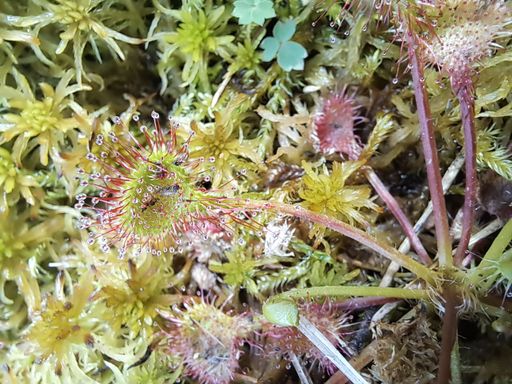Peatlands are gigantic water reservoirs, habitats for many rare and endangered animal and plant species, act as carbon sinks, protect against extremes such as floods and droughts, have a cooling effect on the environment through the evaporation of water and offer recreational space and nature experiences for people.
In the past, many moors were drained and drained to produce peat and so 70-90% of the original moor areas in Austria have disappeared. This was also the case in the largest raised moor in Lower Austria, the Schremser raised moor. Today, the remains of the original 300 hectare moor are protected, are a Natura 2000 protected area, and are home to a nature park and a Ramsar wetland reserve. The functions of our peatlands, with all their positive ecosystem services, are clearer and more important than ever, which is also reflected in various national and EU-wide peatland protection goals. Especially in these ecosystems, it is essential to promote nature and climate protection projects to preserve and improve them.
That’s why there’s a new big project called “Moor renaturation in the Schremser Hochmoor” in the starting blocks. The coordination, preparation and submission was carried out by the Nature Park and Ramsar Center UnterWasserReich and is now to be implemented together with regional companies and stakeholders over the next two years. It is part of an Austria-wide biodiversity fund project called “Landscapes Full of Life”, in which eleven nature parks from six federal states, together with the Association of Austrian Nature Parks (VNÖ), pool the strength of their network to implement a total of 15 projects to protect biodiversity and promote habitat connectivity.
What exactly is planned?
The aim of moor renaturation is to to renaturate two degenerated parts of the moor. A total of 2.6 hectares are expected to benefit from the project. To do this, two former drainage ditches will be closed with five wooden dams, so-called sheet pilings, in order to raise and stabilize the moor water level and thus revive moor growth. In addition, woody vegetation is reduced through heavy thinning in order to reduce evaporation (transpiration) and restore the open area character typical of moors.
In addition, peatland protection is communicated regionally and nationally through educational measures such as a publicly accessible moorland excursion for the population, a press conference, social media posts and much more. In addition, participatory nature and climate protection should be practiced through a “hands-on community service day”.
Habitat connectivity
The preservation or promotion of such degenerated moor sites is also an important measure for habitat networking. Next to the Protection of rare species, such as the moor frog, moss damsel, moor fritillary, moor ground beetle, sundew and wood sandpiper, these are also protected from genetic erosion or isolation by so-called “stepping stone biotopes” over which they can migrate spatially more easily. Through the project, all ecosystem services, including water and carbon storage functions, can be restored in the best possible way and secured for the future.
financing
Preparatory activities were significantly supported by crowdfunding from the Hochmoor support group and the project itself is supported by the biodiversity fund of the Federal Ministry for Climate Protection, Environment, Energy, Mobility, Innovation and Technology.
